Along for the Ride #269
🇨🇦 election reprieve, complex streets for safety, and the impact of provisional bike lanes
Heya friends, happy Friday!
First and foremost: a big thank you to those who felt the ~vibes~ of the uninspired intro to last week’s newsletter (it’s both comforting and sad vibes to know that a lot of us feel a bit lost at the moment). At least we’re a bit lost together.
Secondly, a small woo-hoo that Canada narrowly avoided a complete political catastrophe. There’s a big loss of the more left-leaning parties losing their seats which is incredibly upsetting, but I will take it over the alternative.
There will be no newsletter next week as I’ll be in Paris ❤️ but I promise some exciting photos of bicycles, pedestrianized streets, and my mom (the big seller, I know).
How complex street networks make for safer driving
I’ve long felt that cities are the home to counter-intuitive experiences (such as if you widen road, you’ll create more traffic leading to more congestion vs. if you slim it down), and this article capture another fun counter-intuitive experience. This article details how when roads feel safer to drivers (e.g. wider lanes, straight shots, no obstacles obscuring views, etc), drivers often compensate by speeding up and paying less attention, which in turn makes those roads …. far less safe than their tree-lined, winding, view-obstructed friends that force drivers to snap to attention and drive better.
Trigger warning: this article is about how AI was used to evaluate Hong Kong’s streets to determine what makes a street more walkable. I (personally) dislike the idea of using AI for *waves hands* all the things (call me a luddite!). The environmental impact of it makes my stomach drop and I get an eye twitch whenever people use it for silly endeavors that I think their beautiful minds would love the challenge of. Anyways! I read the article and it identified “benches, shade trees, sidewalks, and crosswalks” as mechanisms to make cities more walkable… which is honestly depressing because I learnt that over a decade ago in geography school and we definitely didn’t need AI to validate that conclusion.
USDOT waters down AV regulations
I linked to this news in last week’s newsletter, but in the aftermath, many noted how Tesla specifically stands to gain much from the changes (LA Times). It’s no surprise that this is the impact of Muck’s impact on USDOT, but what are we doing to protect public safety from private interest here?
California DMV surveying residents on AV trucking regulations
Last week the California DMV, which permits AVs in the State, announced that they are developing regulations for autonomous freight trucks. They are seeking public comment on proposed regulations, so if you’re based in California now is the time to share your point of view :) You can read the proposal, and find an email to share your thoughts here, through June 9, 2025.
China’s adoption of advanced assisted driving systems
This article shows the pace of China’s growth in advanced assisted driving systems (something the country seems to be reflecting on after the recent death of three students in Tongling). 50% of vehicles sold in China last year were enabled with advanced assisted driving technology compared to 40% in the US (in 2021, China and the US were neck and neck at 24%).
May Mobility partners with Uber
May joins a growing list of AV partnerships for Uber (including Waymo, WeRide, and Avride). The partnership will be based in Arlington, where May has been operating since 2021. May Mobility has raised over $380 million from investors including Toyota and BMW.
Toyota and Waymo explore partnership
Core to the partnerhip includes exploring “personally owned vehicles”. Ahhhhh the promise of shared mobility evaporating before our eyes in favour of private profit (not surprised, but still allowed to be bitter!). Toyota and Waymo plan to develop a “new autonomous vehicle platform” and “ways to enhance next-generation personally owned vehicles (POVs)”.
Waymo publishes safety research report
Whenever I see research such as this I always have to remind myself that (1) companies can and do pay academics to research their technology, (2) when they do, they are typically looking for favourable outputs, and (3) most (if not all) for profit companies will never disclose the full extent of their data. Which is to say, even when the research is peer-reviewed, I take it a big ol’ pinch of salt.
The research argues that AVs are better adept than human drivers at handling 11 different crash scenarios. The research is based on almost 60m miles travelled across Phoenix, San Francisco, Los Angeles, and Austin. All of these cities have fair weather, similar car-oriented streetscapes (either grid networks, or wide suburban roads), and it’s hard for me to imagine that we can extrapolate a similar result in any city with a more complex street system (per the first article in this week’s newsletter).
Provisional bike lane infrastructure
“During the Covid-19 pandemic, provisional infrastructure was implemented to support active transportation. However, the planning community still requires deeper understandings of the relationships between provisional infrastructure and mobility. We use the example of a roadway closure in Philadelphia to investigate how one active mode—bikeshare use—changed in response to provisional infrastructure. We employ differences-in-differences models that measure the semi-causal effect of provisional infrastructure on bikeshare trip durations and find that even during the pandemic, when trip durations increased across the bikeshare system, provisional infrastructure had an additive and statistically discernible impact above and beyond the pandemic effect.”
Internships
As we enter …. the actual season of internships, I assume the internship postings will dwindle, but I will continue to post them as I see them come through!
Full time jobs
[Atlanta, GA - Altanta Beltline] VP of Transit Innovation
[Boulder, CO - Boulder County] Deputy Director of Transportation Planning
[Colombia / South Africa - C40] Reinventing Cities Manager
[London - Greater London Authority] Principal Environmental Sustainability Officer
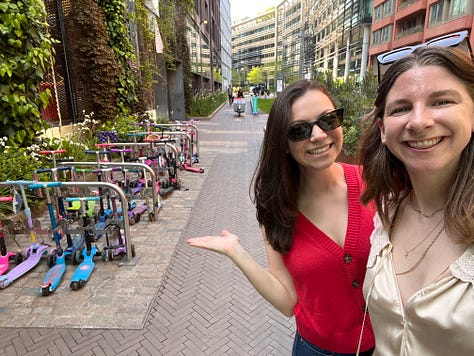
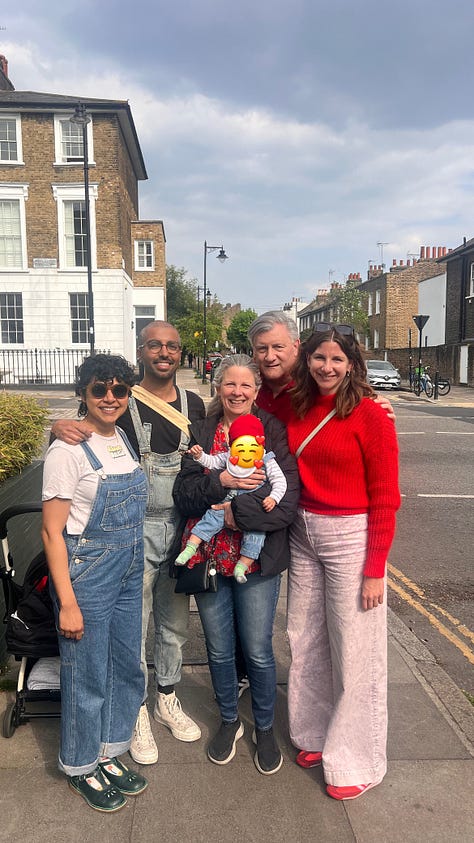
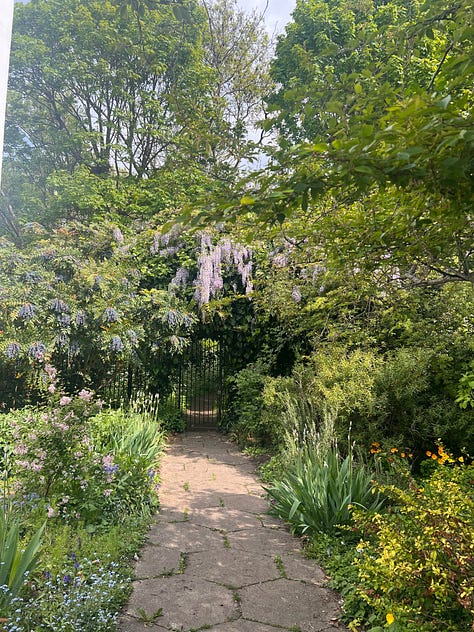
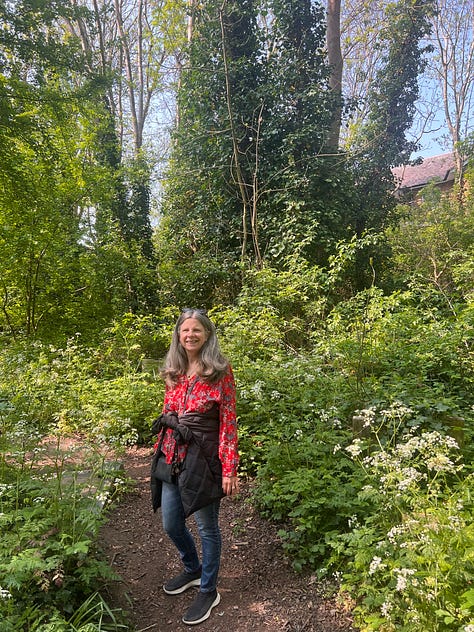
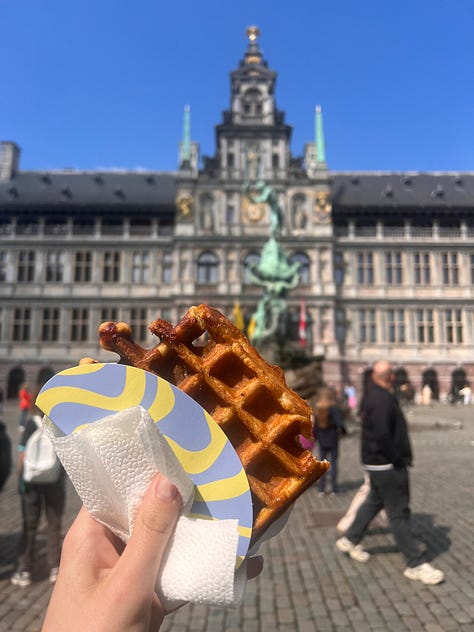
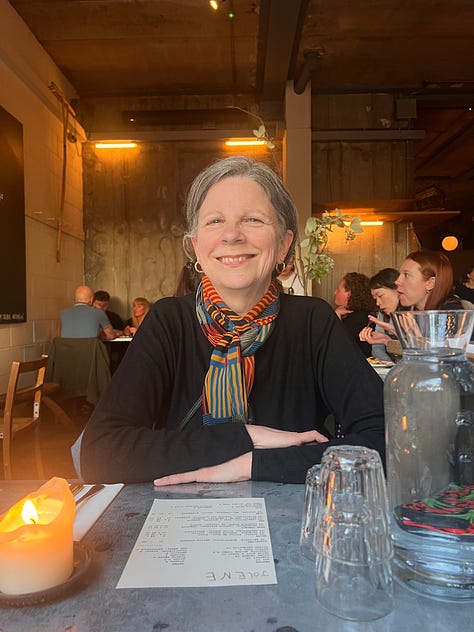
[Disclaimer] I did not know that the Maggie Rogers and Sylvan Esso song I shared last week was a cover of this Broken Social Scene song from 2003. Thank you to Debs and Sylvia for reminding me that I wasn’t remotely cool in my earlier years 😂
This week I was brought down a notch by food poisoning (woes), so I don’t have a ton of fun activities to share. I watched peak entertainment when in recovery (gilmore girls and monsters, inc) and have been eating my way through shades of beige food for says, but happy to say things seem to have settled and I am in much better place now.
Pre-food poisoning I had the wonderful opportunity to grab coffee with my old boss Rachel who was in town, and we naturally ran into the cutest children’s scooter parking coral that maybe exists on this fair planet.
In other entertainment news, I just started watching Four Seasons on Netflix, and so far I am loving it. The comedic timing is perfect and Tina Fey is just in her prime. 20/10 recommend.
That’s all from me. Have a beautiful weekend friends.
Sarah
If you’d like to support my work and this newsletter, please consider becoming a member of the San Francisco Bicycle Coalition or making a donation.








